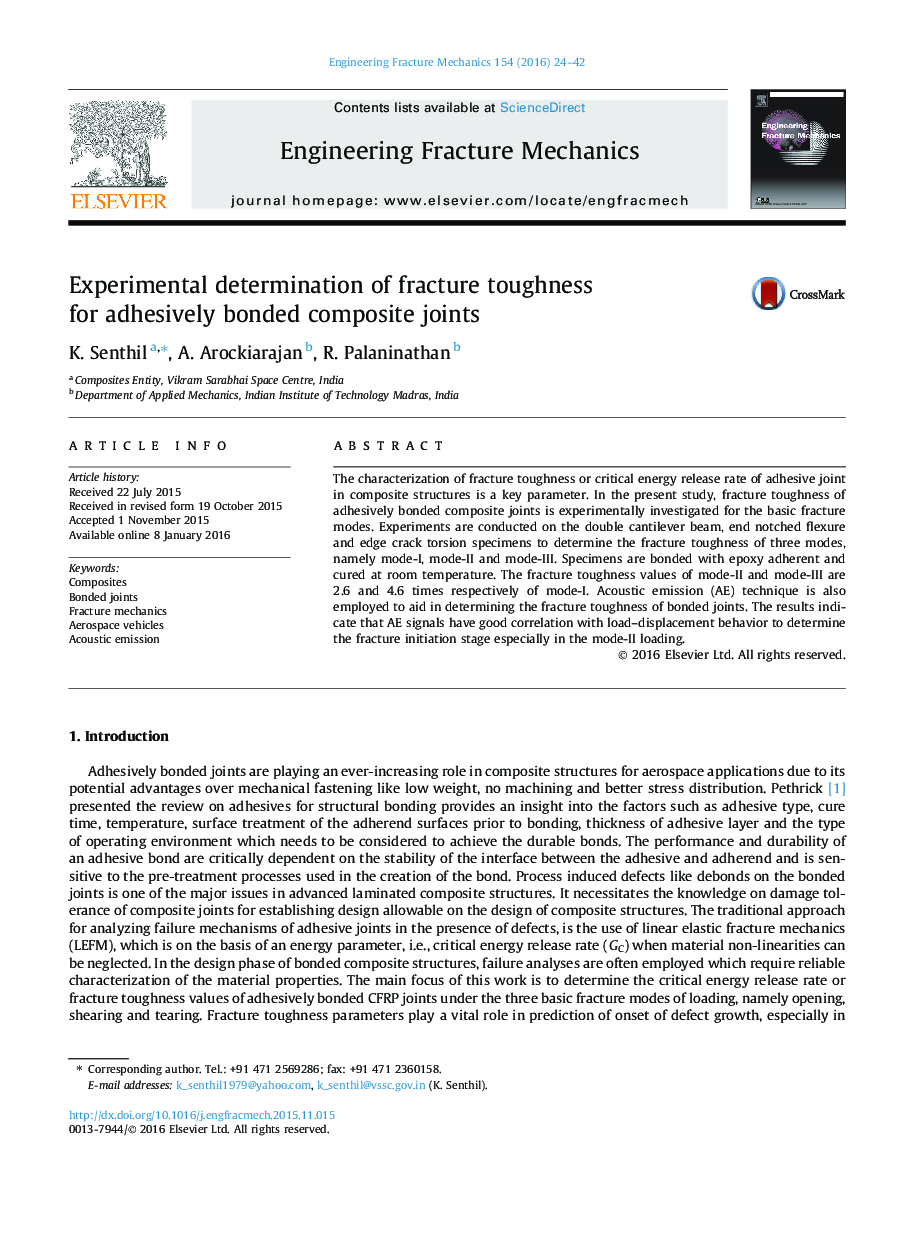| Article ID | Journal | Published Year | Pages | File Type |
|---|---|---|---|---|
| 766154 | Engineering Fracture Mechanics | 2016 | 19 Pages |
•Experimentally determined the fracture toughness of an adhesive material for the bonded composite joints.•Double cantilever beam, end notched flexure and edge crack torsion specimens are used to study the basic fracture modes.•Acoustic emission technique is employed to detect the onset of growth of debond.
The characterization of fracture toughness or critical energy release rate of adhesive joint in composite structures is a key parameter. In the present study, fracture toughness of adhesively bonded composite joints is experimentally investigated for the basic fracture modes. Experiments are conducted on the double cantilever beam, end notched flexure and edge crack torsion specimens to determine the fracture toughness of three modes, namely mode-I, mode-II and mode-III. Specimens are bonded with epoxy adherent and cured at room temperature. The fracture toughness values of mode-II and mode-III are 2.6 and 4.6 times respectively of mode-I. Acoustic emission (AE) technique is also employed to aid in determining the fracture toughness of bonded joints. The results indicate that AE signals have good correlation with load–displacement behavior to determine the fracture initiation stage especially in the mode-II loading.
